Yeosu travel - South Korea, Asia
Yeosu, a picturesque city located on the southern coast of South Korea, is known for its stunning natural beauty, rich maritime history, and vibrant culture. Situated in South Jeolla Province, Yeosu overlooks the East China Sea and is characterized by its scenic coastline, numerous islands, and temperate climate. The city is surrounded by numerous islands—365 in total, of which 48 are inhabited. This creates breathtaking coastal views and opportunities for island hopping. Famous for its seafood, particularly dishes like gejang (marinated raw crab) and gat-kimchi (mustard greens kimchi), which are local specialties.
Seeking a tailored South Korea adventure? Explore our premium Japan tour offerings here.
Population: approximately 300,000 as of 2024.
Economy: Yeosu serves as a crucial hub for Korea’s petrochemical industry, accounting for about half of the nation’s petrochemical production
Landmarks: Yeosu Expo Ocean Park, Hyangiram Hermitage, Dolsan Bridge, Jinnamgwan Hall, Sky Tower Observatory
South Korea
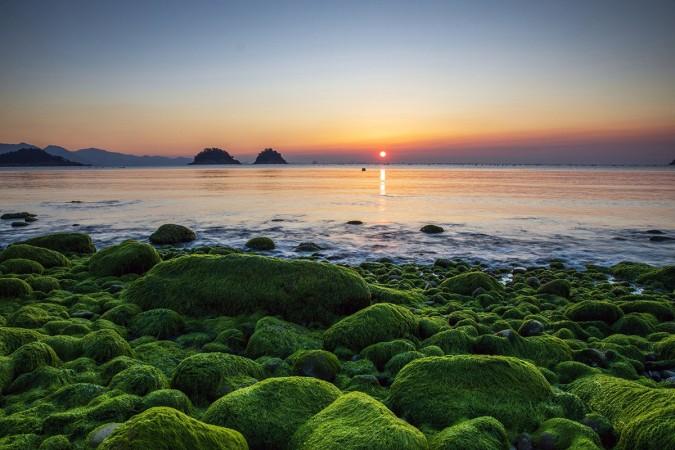
Overview of Yeosu
History & Culture Influence
Yeosu's history dates back to ancient times, with its name evolving through various dynasties. It was known as Wonchon-hyeon during the Baekje Kingdom and later became a naval command center during the Joseon Dynasty, highlighting its strategic importance along the southern coast of Korea.
The city underwent significant transformation during the Japanese colonial period (1910-1945), when it evolved from a small fishing village into a colonial economic center. Japanese settlers established fishing industries and infrastructure, which laid the groundwork for Yeosu's modern economy. This period also introduced Western influences, particularly from missionaries who contributed to education and social services.
Yeosu is notable for the Yeosu-Suncheon Rebellion in 1948, a significant uprising against the government that reflected the political tensions of the time. This event has left a lasting impact on the city's identity and collective memory.
Yeosu's deep connection to the sea has shaped its cultural landscape. The city is known for its seafood cuisine, traditional fishing practices, and maritime festivals, which celebrate its seafaring history.
Interaction with The Locals
Visitors to Yeosu can expect a warm and welcoming interaction with locals, who are generally friendly and open to engaging with tourists. Here are some key points regarding the local population, ethnic makeup, and attitudes toward visitors. While many locals may speak some English, especially in tourist areas, learning a few basic Korean phrases can enhance interactions and show respect for the local culture.
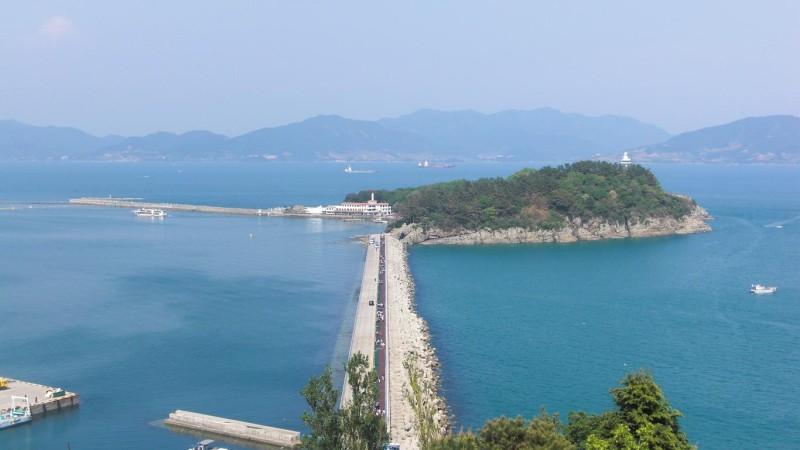
Odongdo Island - © gather
Top attractions in Yeosu
Odongdo Island
Location: Off the coast of downtown Yeosu
Odongdo Island is a picturesque getaway connected to Yeosu’s mainland by a scenic bridge. Famous for its more than 70 species of wildflowers, especially camellias, the island is a haven for nature lovers. Visitors can stroll along walking trails that offer breathtaking ocean views and explore the island’s charming lighthouse, making it a perfect spot for a peaceful day out.
Yeosu Expo Ocean Park
Location: Sujeong-dong, Yeosu, Jeollanam-do
Once the venue for the 2012 World Expo, Yeosu Expo Ocean Park has been transformed into a vibrant attraction featuring the iconic Big-O, a massive circular structure that hosts mesmerizing multimedia shows. The park is a fun destination for families, with aquariums, exhibition halls, and beautifully landscaped gardens to explore.
Hyangiram Hermitage
Location: 1 Hyangiram-ro, Dolsan-eup, Yeosu, Jeollanam-do
Perched dramatically on a cliff, Hyangiram Hermitage is a tranquil Buddhist temple known for its breathtaking sunrise views over the sea. Visitors must climb a steep set of steps to reach this serene retreat, where they can reflect in peace while soaking in the stunning ocean scenery below.
Jinnamgwan Hall
Location: 11 Dongmun-ro, Yeosu-si, Jeollanam-do
As the largest single-story wooden structure in Korea, Jinnamgwan Hall holds immense historical significance. Built in 1599, it once served as Admiral Yi Sun-sin’s headquarters during the Japanese invasions. Today, it stands as a proud historical monument showcasing traditional Korean architecture.
Take a deeper look at the rich history and culture of Daegu. Our guide here reveals everything you need to know for your visit.
Manseongni Black Sand Beach
Location: 15-1 Manseongni-gil, Manheung-dong, Yeosu-si, Jeollanam-do
Manseongni Black Sand Beach is unique for its therapeutic black sand, formed from volcanic rock. The beach is a popular spot for swimming, sunbathing, and relaxation. Its scenic beauty, combined with its natural healing properties, makes it a favorite among locals and tourists alike.
Yeosu Maritime Cable Car
Location: 3600-1 Dolsan-ro, Dolsan-eup, Yeosu-si, Jeollanam-do
The Yeosu Maritime Cable Car offers a thrilling 1.5 km ride over the city, providing panoramic views of Yeosu’s stunning coastline, islands, and the sparkling sea. For an extra thrill, visitors can ride in crystal-bottom cabins, offering a breathtaking glimpse of the landscape below.
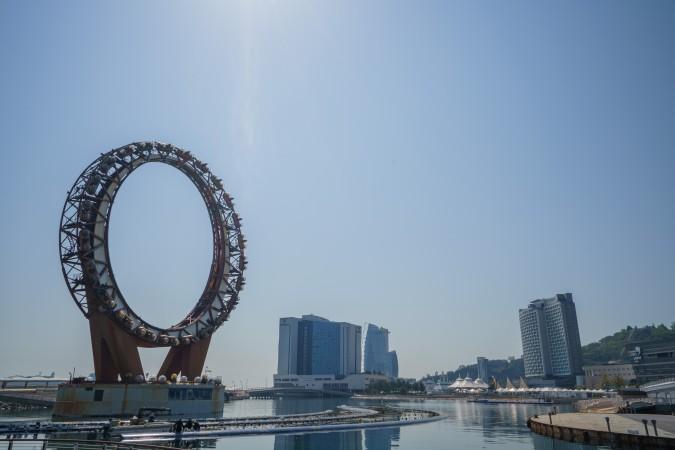
Yeosu Expo Ocean Park - © gather
Must-Try Dishes in Yeosu
When visiting Yeosu, be sure to try ganjang gejang (soy sauce marinated raw crab), a local delicacy known for its rich umami flavor and fresh, high-quality crab. For something spicier, agujjim (braised angler fish) is a must-try dish, featuring tender fish braised in a savory, spicy sauce. Don't miss seodae hwae (Spanish mackerel sashimi), a favorite that highlights the city’s fresh seafood offerings.
Ganjang Gejang (Soy Sauce Marinated Raw Crab)
A true culinary gem of Yeosu, ganjang gejang is a must-try for seafood lovers. This delicacy consists of fresh raw crabs marinated in a savory soy sauce mixture, resulting in a rich umami flavor that seafood enthusiasts rave about. Known for its high-quality preparation, Yeosu's version of ganjang gejang stands out as one of the finest in Korea, making it a key highlight of the region’s traditional Jeolla cuisine.
Agujjim (Braised Angler Fish)
Yeosu is renowned for its agujjim, a flavorful braised angler fish dish. The tender white fish is braised in a spicy, savory sauce made with chili pepper, garlic, soybean paste, and soy sauce, offering a perfect balance of heat and umami. With its clean taste and meaty texture, agujjim is a staple in Yeosu's food scene and a favorite among locals and visitors alike.
Seodae Hwae (Sashimi)
Yeosu’s coastal waters provide an abundance of fresh seafood, and seodae hwae (sashimi made from Spanish mackerel) is a local standout. This sashimi offers a firm texture and rich flavor, showcasing the high-quality fish that Yeosu is known for. It's a popular choice for those seeking an authentic taste of the city's marine bounty.
Are you interested in exploring the wonders of Paju? Discover more right here for an unforgettable experience.
Kkomak Tteok (Kkomak Rice Cakes)
A unique treat from the Jeolla region, kkomak tteok are savory rice cakes made with rice flour and seaweed, giving them their distinct green hue and umami flavor. These chewy cakes are often enjoyed as a snack or side dish, and their connection to Yeosu’s rich culinary traditions makes them a specialty worth trying when visiting the area.
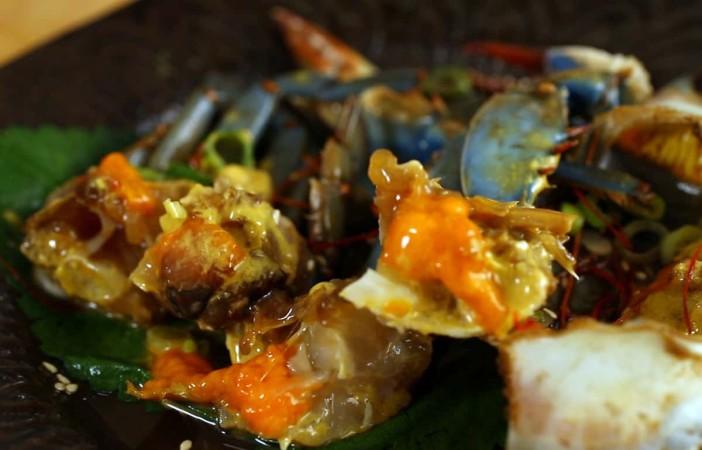
Ganjang Gejang - © gather
Festivals & Local Celebrations
Yeosu Expo Ocean Festival
Time of Year: Annually in May and June
This vibrant festival celebrates Yeosu's deep connection to the sea with a variety of ocean-themed events. Visitors can enjoy a spectacular sea parade, marine exhibitions, traditional Korean performances, and even K-pop concerts. The festival's highlight is a dazzling fireworks display over the ocean, making it a must-see for both locals and tourists.
Yeosu International Fireworks Festival
Time of Year: Held annually in summer
Every summer, Yeosu lights up the night with its breathtaking International Fireworks Festival. The colorful fireworks burst over the water, creating a mesmerizing show against the backdrop of the city's coastline. It's a magical event that draws large crowds and offers a perfect evening by the sea.
Yeosu Jinnam Turtle Ship Festival
Time of Year: September 30 to October 2
The Yeosu Jinnam Turtle Ship Festival pays tribute to the legendary Admiral Yi Sun-sin and his iconic turtle ships used in the Imjin War. The festival offers exhibitions, military parades, cultural performances, and interactive experiences that immerse visitors in Korea's rich naval history. It's a great way to learn about local history while enjoying lively celebrations.
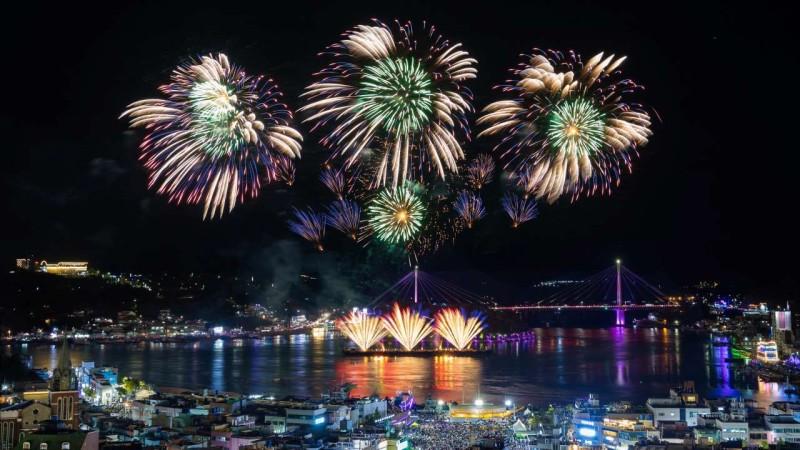
Yeosu International Fireworks Festival - © gather
What to Do in Yeosu
Yeosu Maritime Cable Car
Visitors can take a scenic ride on the Yeosu Maritime Cable Car, which offers breathtaking views of the coastline and surrounding islands. The ride provides a unique perspective of the city's natural beauty, making it a perfect outdoor adventure.
Odongdo Island
A short ferry ride from Yeosu, Odongdo Island is known for its beautiful walking trails, lush gardens, and scenic coastal views. Visitors can explore the island's famous camellia trees, enjoy the picturesque lighthouse, and relax on the beach.
Yeosu Ocean Rail Bike
This fun and unique activity allows visitors to pedal along scenic coastal tracks on a rail bike. The ride offers stunning views of the ocean and surrounding landscapes, making it an enjoyable way to experience Yeosu's natural beauty.
Hyangiram Hermitage
For a cultural experience, visitors can explore Hyangiram Hermitage, a historic Buddhist temple located on a cliff. The hermitage offers a peaceful atmosphere, beautiful architecture, and stunning views of the ocean, providing insight into Korea's spiritual heritage.
Yeosu International Fireworks Festival
If visiting during the summer, tourists can enjoy the Yeosu International Fireworks Festival, which features spectacular fireworks displays over the ocean. The festival includes various performances and events, creating a vibrant atmosphere for visitors to experience local culture.
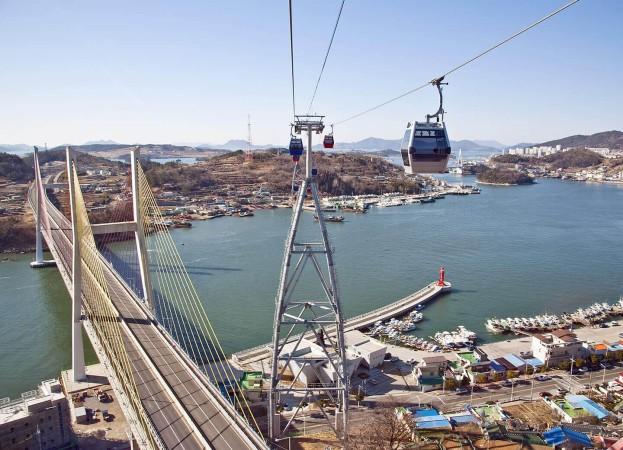
Yeosu Maritime Cable Car - © gather
Weather in Yeosu: Best Time to Visit
Yeosu enjoys a humid subtropical climate with four distinct seasons. Here's a brief overview of the weather across the year:
Spring (March to May)
Temperatures: Average highs of 13-18°C (55-64°F)
Rainfall: Moderate, with occasional showers
Highlights: Cherry blossom season in April, Yeosu Cherry Blossom Festival
Summer (June to August)
Temperatures: Average highs of 25-29°C (77-84°F)
Rainfall: Heavy, with monsoon season in July
Highlights: Yeosu Expo Ocean Festival in May-June, Yeosu International Fireworks Festival in summer
Fall (September to November)
Temperatures: Average highs of 20-25°C (68-77°F)
Rainfall: Light to moderate
Highlights: Yeosu Jinnam Turtle Ship Festival in late September to early October, Yeosu Traditional Crafts Festival in October
Winter (December to February)
Temperatures: Average highs of 5-10°C (41-50°F), lows around -1°C (30°F)
Rainfall: Light, with occasional snow
Highlights: Mild winter weather, fewer tourists
Best Time to Visit
The best time to visit Yeosu depends on your interests and preferences:
Spring (April-May): Mild weather, beautiful cherry blossoms, fewer tourists
Summer (June-August): Warm weather, vibrant festivals and events, but also heavy rainfall during monsoon season
Fall (September-November): Mild weather, colorful foliage, fewer tourists
Winter (December-February): Mild weather compared to other parts of Korea, fewer tourists, but some attractions may have reduced hours
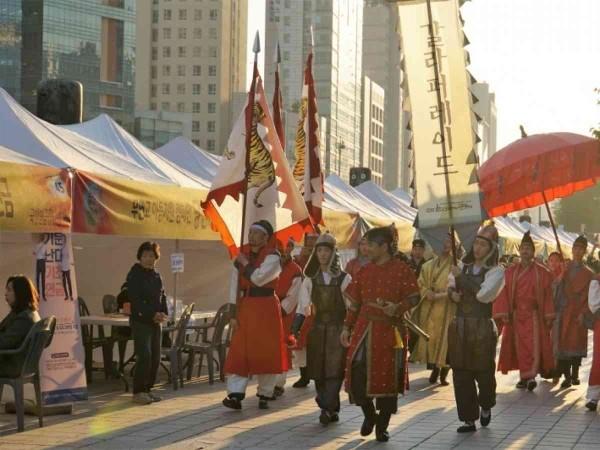
Yeosu Jinnam Turtle Ship Festival - © gather
Culture Etiquette in Yeosu
Respect for Traditions
When visiting religious sites such as temples, it's important to dress modestly and follow any guidelines, including removing your shoes in certain areas. Maintaining a quiet and respectful demeanor is also expected to honor the sanctity of these places.
Greeting Etiquette
A slight bow or a simple "Annyeonghaseyo" (Hello) goes a long way in showing respect, particularly to elders. Greetings are an integral part of Korean culture, and using polite gestures will leave a positive impression.
Dining Customs
At mealtimes, it's customary to wait for the eldest person to begin eating before you start. Additionally, when passing or receiving items, especially drinks, it's considered polite to use both hands as a sign of respect.
Avoiding Sensitive Topics
In conversations, it's best to steer clear of potentially sensitive topics like politics or the Korean War. Instead, opt for neutral and engaging subjects such as local food, cultural practices, or travel experiences, which are always safe and enjoyable.
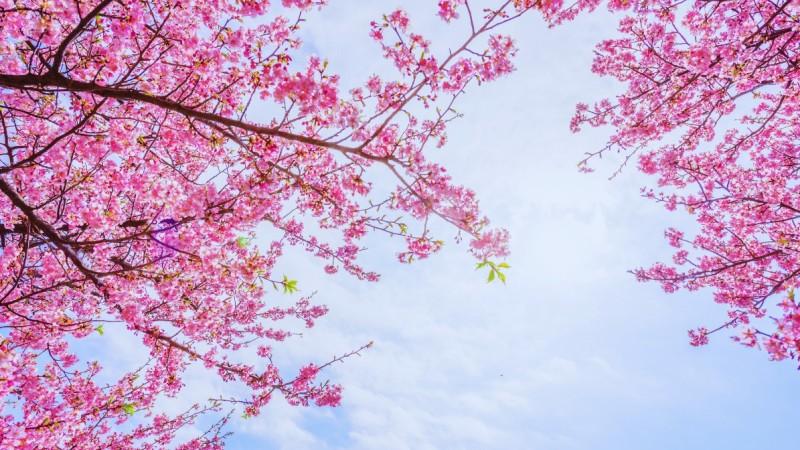
Yeosu cherry blossoms - © gather
Essential Travel Information
Transportation
Airport Transfers
Yeosu has its own airport, Yeosu Airport (RSU), which offers domestic flights. For international travelers, the nearest major airports are Gimpo International Airport (GMP) and Incheon International Airport (ICN).
Transfers from Yeosu Airport: Visitors can easily arrange airport transfers to the city center via taxis or pre-booked shuttle services. Taxi fares to major destinations in Yeosu are generally reasonable, with fares to Yeosu City Hall around KRW 12,000 and to Odongdo Island approximately KRW 20,000.
Public Transit
Yeosu has a public bus system that connects various parts of the city, including popular tourist attractions. Buses are an economical way to navigate the city, although schedules may vary.
Taxis
Taxis are widely available in Yeosu and are a convenient option for getting around. They operate on a metered fare system, and the estimated fares for common destinations are as follows:
Yeosu City Hall: KRW 12,000 (20 minutes)
Odongdo Island: KRW 20,000 (20 minutes)
Hyangiram Hermitage: KRW 50,000 (60 minutes)
Taxis can be hailed on the street or booked through local services.
ATM and Banking Services
ATMs
Yeosu has numerous ATMs available, including those from major banks like KEB Hana Bank, Shinhan Bank, and Woori Bank. Many ATMs offer services in English and other languages, making them accessible for international visitors.
It's important to note that using ATMs from non-bank brands may incur higher service fees, typically ranging from KRW 500 to KRW 1,500 per transaction. Visitors should look for bank-owned ATMs to avoid additional charges when using domestic cards.
Banking Hours
Most banks in Yeosu operate during standard business hours, usually from 9:00 AM to 4:00 PM, Monday through Friday. Some ATMs may be available 24/7, particularly those located in convenience stores, although these may charge service fees for withdrawals.
Accommodation Choices
Hotels:
The MVL Hotel Yeosu: A luxury hotel offering stunning ocean views, modern amenities, and convenient access to local attractions. Ideal for travelers seeking comfort and elegance.
Yeosu Beach Hotel: Located near the beach, this hotel provides easy access to the waterfront and local dining options, making it a great choice for beach lovers.
Guesthouses and Hostels
Yeosu Guesthouse: A budget-friendly option that offers a cozy atmosphere and the chance to meet other travelers. It’s conveniently located near public transportation.
Backpackers Yeosu: This hostel caters to budget travelers and backpackers, providing dormitory-style accommodations and communal spaces for socializing.
Traditional Accommodation
Hanok Stay: Visitors can experience traditional Korean hospitality by staying in a hanok, a traditional Korean house. This option offers a unique cultural experience, allowing guests to immerse themselves in local customs and architecture.
Articles for you

Explore Yala National Park - Sri Lanka Travel, Asia
Tucked away in Sri Lanka’s southeastern corner, Yala National Park is where wild nature meets deep tradition. Known worldwide for its leopard population, the park is also home to elephants, sloth bears, crocodiles, and hundreds of bird species. Beyond wildlife, Yala opens doors to a cultural landscape dotted with ancient temples, Buddhist ruins, and coastal villages. For travelers seeking more than just a safari, Yala offers a chance to explore eco-tourism, local communities, and sacred heritage sites.
Population: The Yala National Park area doesn’t have a human population.
Economy: The economy around Yala National Park thrives on a blend of eco-tourism, agriculture, and local services. Safari tours, eco-lodges, and cultural experiences drive steady income for nearby towns like Tissamaharama and Kataragama, supporting thousands of families.
Landmarks: Famous for Block I of Yala and wildlife encounters, including elephants, sloth bears, crocodiles, and exotic bird species.

Explore Galle - Sri Lanka Travel, Asia
Nestled on Sri Lanka’s southern coastline, Galle is a vibrant city where history meets the sea. Its cobbled streets, colonial architecture, and serene beaches make it a must-visit destination for travelers seeking a blend of culture, adventure, and relaxation. A UNESCO World Heritage site, Galle captivates visitors with its Dutch Fort, bustling markets, and friendly locals. Whether you’re exploring the ramparts at sunset or savoring fresh seafood by the shore, Galle promises an unforgettable journey into Sri Lanka’s heritage.
Population: Approximately 113,000 in 2023.
Economy: Galle’s economy thrives on tourism, trade, and fisheries. The city’s historic fort, colonial architecture, and coastal charm draw thousands of international visitors each year, making tourism its main economic driver. Fishing remains vital for local livelihoods, supplying fresh seafood across the region.
Landmarks: Famous for the Galle Fort, Dutch Reformed Church & Maritime Museum, and Unawatuna Beach.

Explore Bentota - Sri Lanka Travel, Asia
Nestled along Sri Lanka’s southwestern coast, Bentota is a tropical paradise that blends golden beaches, vibrant culture, and thrilling adventures. Famous for its calm waters, luxury resorts, and scenic river estuary, Bentota has become a top destination for travelers seeking both relaxation and authentic experiences. From serene beach walks at sunrise to adrenaline-pumping water sports, this coastal town offers a perfect balance of leisure and exploration. With its proximity to Colombo and Galle, Bentota is easy to reach, making it an ideal stop for both short escapes and extended holidays.
Population: Approximately 37,000 in 2023.
Economy: Bentota’s economy thrives mainly on tourism, which drives local businesses such as hotels, restaurants, and wellness retreats. The town also benefits from fishing, coconut cultivation, and handicrafts like wood carving and batik textiles. Many residents rely on the growing demand for water sports and Ayurvedic treatments, making tourism the backbone of both income and employment in the area.
Landmarks: Famous for Bentota Beach, Bentota River Safari, and Kande Vihara Temple.

Explore Mirissa - Sri Lanka Travel, Asia
Mirissa is a charming coastal town on Sri Lanka’s southern shoreline. Known for its golden beaches, turquoise waters, and vibrant marine life, it has become a must-visit stop for travelers exploring the island. Many come for whale watching, surfing, and sunset views at Coconut Tree Hill, but Mirissa offers much more than postcard beauty. The fishing boats you see anchored by the bay carry generations of stories. Local traditions, delicious cuisine, and a laid-back rhythm of life shape every visitor’s experience.
Population: Approximately 4,700 in 2023.
Economy: Mirissa’s economy is largely shaped by its coastal location. Fishing has long been the backbone of local livelihoods, with generations relying on the Indian Ocean for income. In recent decades, tourism has become the main driver of growth, thanks to whale watching, surfing, and beachside hospitality.
Landmarks: Famous for Mirissa Beach, Coconut Tree Hill, and Parrot Rock Bridge.

Explore Nuwara Eliya - Sri Lanka Travel, Asia
Tucked away in the Central Highlands of Sri Lanka, Nuwara Eliya is often called “Little England”. With its rolling tea plantations, cool misty mornings, and colonial charm, this mountain town feels like a step into another world. Travelers come here to breathe fresh air, walk through flower gardens, sip the finest Ceylon Tea, and enjoy a pace of life far from the island’s busy cities. Whether you’re drawn by scenic landscapes, heritage architecture, or the warmth of its people, Nuwara Eliya is a destination that blends nature, culture, and history in perfect harmony.
Population: Approximately 781,000 in 2023.
Economy: Nuwara Eliya’s economy thrives mainly on tea production, as it sits in the heart of Sri Lanka’s central highlands, famous worldwide for Ceylon Tea. The city also benefits from a growing tourism industry, attracting visitors with its colonial charm, cool climate, and scenic landscapes.
Landmarks: Famous for Gregory Lake, Hakgala Botanical Garden, and Victoria Park.

Explore Sukau - Malaysia Travel, Asia
Nestled on the banks of the Kinabatangan River in Sabah, Malaysian Borneo, Sukau is a destination where wildlife, culture, and conservation come together. Known as one of Asia’s top spots for river safaris and eco-tourism, this quiet village offers a front-row seat to encounters with Bornean orangutans, pygmy elephants, proboscis monkeys, and exotic birdlife.
Population: Approximately 1,400 in 2019.
Economy: Sukau’s economy is shaped by its riverine location and natural resources. Traditionally, the Orang Sungai community relied on fishing, small-scale farming, and forest gathering for their livelihood. Today, the village has shifted toward eco-tourism, with river cruises, jungle trekking, and homestays providing income.
Landmarks: Famous for the Kinabatangan River cruises, Gomantong Caves, and Ox-bow lakes and wetlands.
